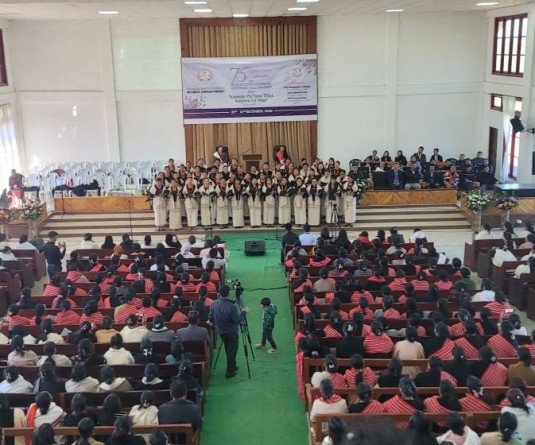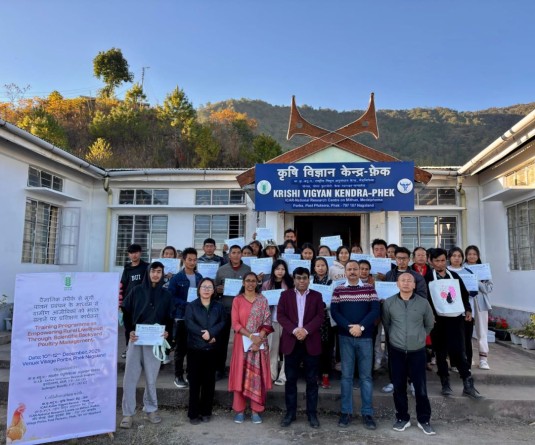
• Teachers’ agitation to affect 2069 government schools across Nagaland state
• Demands bifurcation of Secondary/Elementary Education from Higher Secondary
Morung Express News
Kohima | May 23
From May 24 to May 26; 21,000 teachers in Nagaland will be availing three days mass casual leave in protest against the State Government’s failure to bifurcate Secondary/ Elementary Education from Higher Secondary in the Department of School Education.
The agitation which has been spearheaded by the All Nagaland School Teachers Association (ANSTA) and Nagaland Secondary Schools Field Officers Forum (NSSFOF) demands separation of the two cadres in order to produce quality education. The demand has been going on for 13 years, said ANSTA President Ponchulo Wanth.
He said in order to shape and mould the destiny of the future generation, a peaceful environment and good coordination is needed. Wanth however lamented that there are clashes and tussles between the two cadres.
And despite many requests, appeals and memorandums served to the government for 13 years, the demands have not been fulfilled. “Till today we didn’t get any response from the higher ups,” stated Visato Koso, General Secretary, ANSTA.
In the last meeting this year on April 26, an ultimatum was served where the agitators gave 20 days to the government to fulfill their demands. However with no response; the teachers have been left with no option but to launch the agitation. If no action takes place in the first phase, the second phase will start from June 1 where the teachers will cease work.
“We are demanding for segregation of the two cadres so that we can function independently without encroaching in each other’s areas or interfering in each other’s affairs. We are hopeful that we can bring quality and systematic education. We are fighting for what is due to us,” affirmed Wanth. Although the agitation will affect the students, the committee is of the view that its primary concern is for the welfare of the students and to produce quality education.
“So many times we have been fooled by the Government,” said one teacher. The teachers have tried to reason why the Department of Higher and Technical Education was created when it had only three institutions. Meanwhile, the government has failed to bifurcate the Higher Secondary section, when there are already 41 Higher Secondary Schools in Nagaland with over 600 employees.
The problems, as outlined by the ANSTA and NSSFOF in a memorandum submitted to all concerned agencies appear to be quite a handful. The different academic sessions has hampered the smooth functioning of the school where academic sessions, examination schedules and co curricular activities cannot be conducted together.
“On a close observation of the past 6 years academic results of the HSLC & HSSLC examinations, it is found that in almost all the Government Higher Secondary Schools, the result of HSSLC is far better than the results of HSLC, which may be due to the lack of management experiences of Head in lower classes and the differential treatment towards the two cadres,” stated the memorandum, which further adds that the issue is affecting the teaching-learning process and academic performances of the students of the composite Government Higher Secondary Schools.
The different entry points into service have given a higher advantage to Higher Secondary teachers in matters of promotion, which is disproportionate. The demands also mention that since ‘the cadre, seniority and promotional channel of the two cadres is different, they cannot be clubbed up together to work under one roof and there can be no meeting point in the service journey.’ The mass casual leave agitation will affect 2069 government schools across the state.






